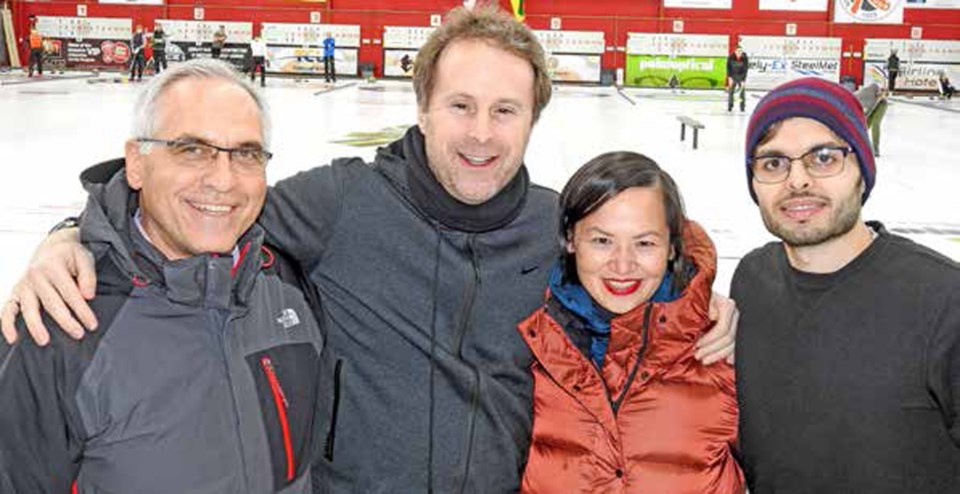YORKTON - If you followed the Men’s World Curling Championships recently you no doubt heard repeated discussion about the evolution of brushing, and its seeming growing impact on the game.
Given that brushing, or its predecessor sweeping with a broom, has been a part of the game since basically forever, that it would evolve is hardly a surprise. It happens in most sports, the baseball glove of today is a cavernous thing compared to those of 100 years ago, and today’s ultra-light composite hockey stick shafts being vastly different than wooden sticks even the 1970s.
So, it’s not surprising brushing/sweeping has changed going from corn brooms such as the ‘Little Beaver’ I used in the late 1970s, through the sock broom revolution – I used a ‘Black Cat’ and then the move to brushes.
In relative terms brushing is still rather new, and the sport is learning new ways to approach the skill and, in the process, some seem to think it is over-influencing the game.
But it might be a case where the very act of brushing is not fully understood.
That is certainly the contention of Eugene Hritzuk.
If you are a long time Saskatchewan curling fan you will recognize the name Hritzuk, a highly successful curler from Saskatoon.
Wikipedia notes Hritzuk won two provincial championships as skip, once in 1985 and again in 1988. This qualified him for the Brier both times. At the 1985 Labatt Brier, he finished the round robin with a 6-5 record. He had to play in two tiebreakers, which he won to get to the semi-final, where he lost to Northern Ontario's Al Hackner. At the 1988 Labatt Brier, he finished the Brier with an 8-3 record, and lost to Alberta's Pat Ryan in the final. It would be his last Brier.
Since then, Hritzuk has been a successful seniors curler, and has represented Saskatchewan at the Canadian Seniors Championships in 2002, 2005, 2006, 2008, 2009 and 2012. He won his first Canadian Seniors Championship in 2008. Hritzuk won the World Senior Curling Championships in May 2009.
Today Hritzuk not only curls but is involved in research, in particular about what exactly happens when a curling rock is brushed.
In that regard Hritzuk notes curling is the only sport in the world where the field of play’ is actually influenced, as the rock moves across the ice, by the action of brushing.
“Ironically what I have found from over 55 years of competitive curling, and the past several years of research, study and working with elite curlers that brushing is the most poorly understood, coached, practiced and executed part of curling,” he wrote in a March 2020 The Curling News.com article.
In the article Hritzuk suggested brush head placement is the key to brushing, adding “which I find when watching the elite curlers, is often poorly done.”
There are three basic principles to understanding what brushing does:
1. Brushing cleans/polishes/heats the ice.
2. Brushing reduces stone-ice friction which causes a stone to glide further.
3. Brushing pressure varies greatly through the length of each stroke which impacts the amount of curl.
Today the influence of brushing is being debated more than ever, but Hritzuk might quell the talk through some research into brushing with a team from the University of Saskatchewan including Dr. Sean Maw, Linda Yip, and Amir Ravanbod.
In an interview with Yorkton This Week Hritzuk said the influence of brushing is likely generally overstated.
“Curlers like to think and talk they can do anything, but there’s really a lot of limitations to what they can do,” he said.
For example, there have been suggested powerful brushing actually scratches the ice, to which Hritzuk calls nonsense. He said there have been microscopic level photos taken and there is no evidence of scratching.
“What brushing does do is clean, polish and heat the ice,” reiterated Hritzuk, adding the level of those three elements relies on the technique of the brushers, and that comes down to a combination of strength to put pressure on the brush head, and the speed of strokes.
So, frost crystals formed from humidity in curling venues can be polished and smoothed and melted “if you brush hard enough . . . If you press hard enough you melt the frost crystals,” said Hritzuk, but adding “not everybody does.”
If there is enough to melt the crystal, it momentarily – a second or two – leaves a film of moisture which allows the rock to slide over that spot more easily.
But a brush stroke is also not a constant thing, noted Hritzuk, with far more pressure on the brush head closer to the core of the body and decreasing rapidly as the arms extend away from the body, even over a short stroke of only a few inches, so the impact dissipates too.
“It not anything really magical . . . If one understands the anatomy of a brush stroke,” he said.
The current research effort is to better understand the science behind brushing, which Hritzuk said is needed because at present a lot of effort goes into brushing without fully understanding what is happening.
“If they understood what they are doing to the ice they wouldn’t be doing it,” he said. “. . . We want to find out more about what brushing does.”
The work was already under way when the World Curling Federation became involved to push the project farther.
“They (WCF) want us to do more,” said Hritzuk.
Research will help brushers do it better.
“It’s understanding what science is behind it to be better sweepers,” said Hritzuk. “. . . It’s going to be an interesting journey.”

